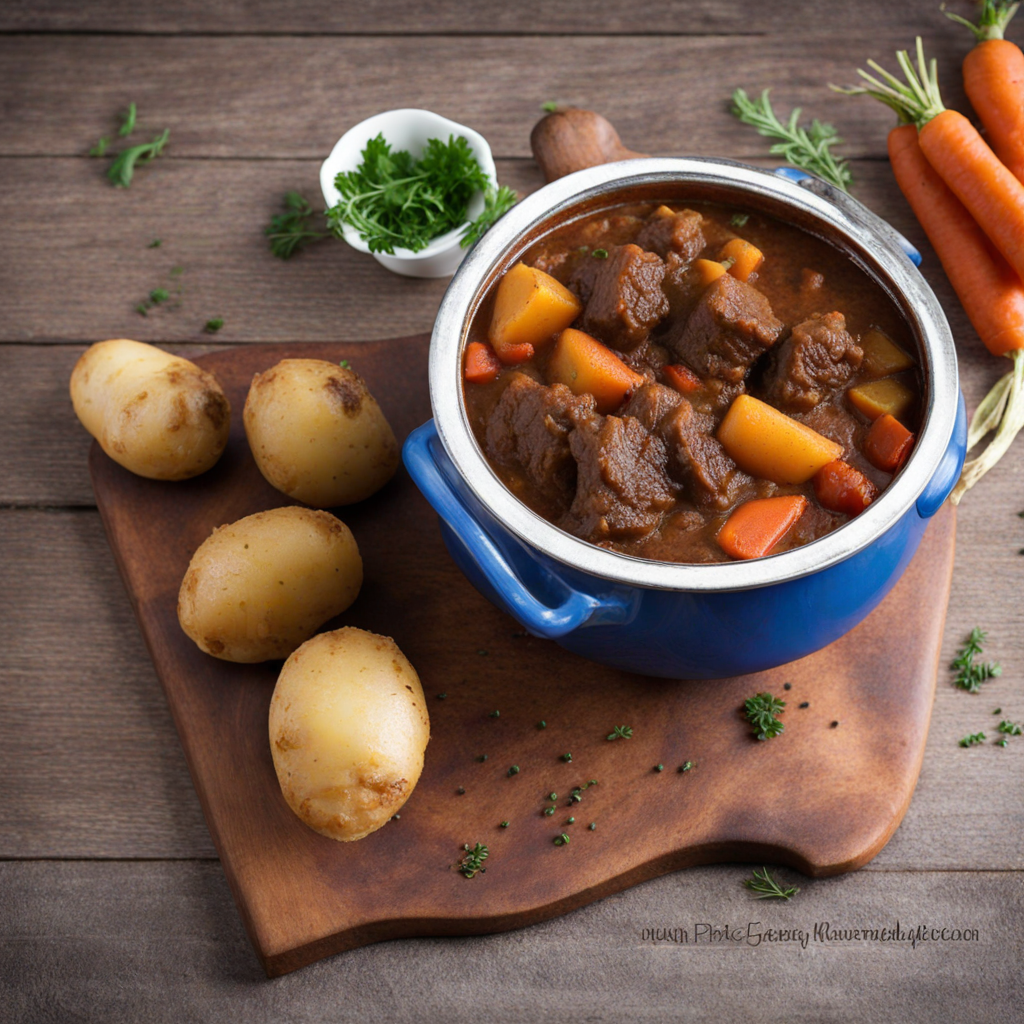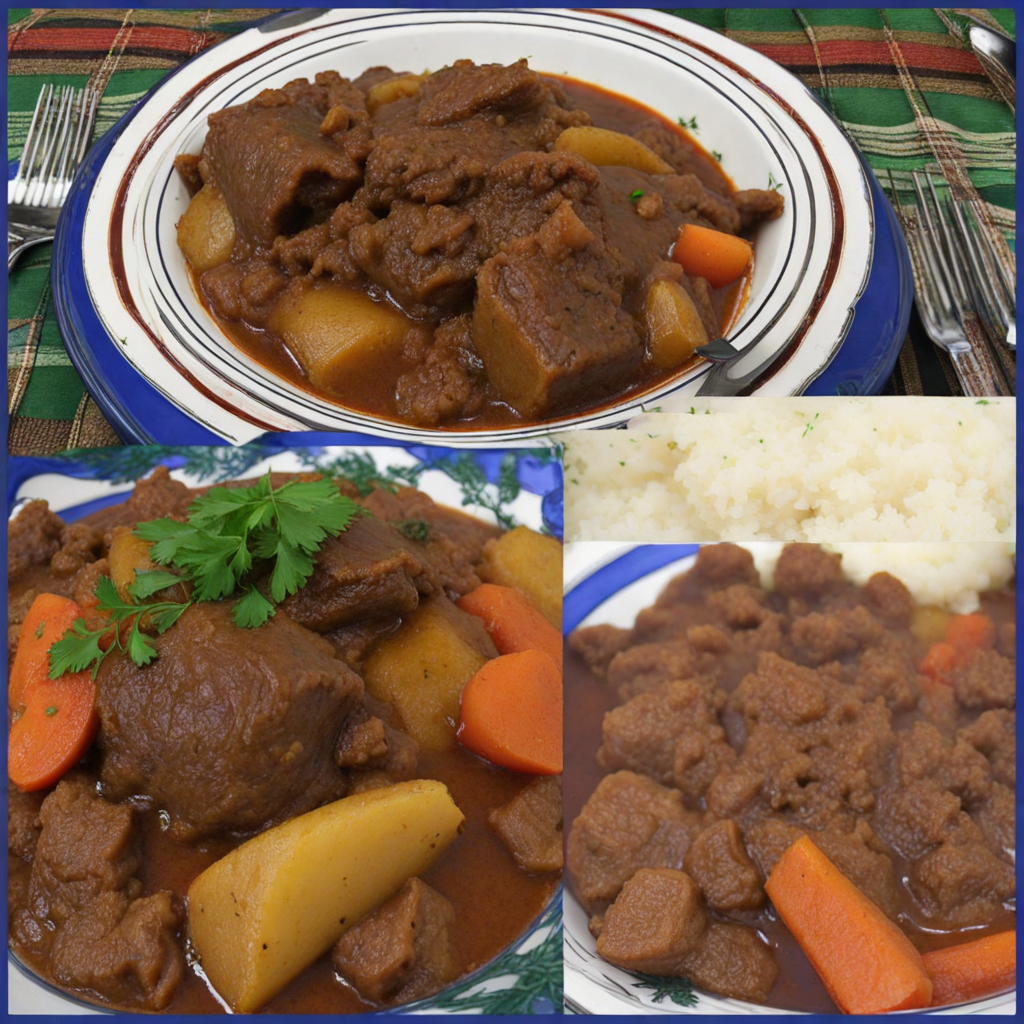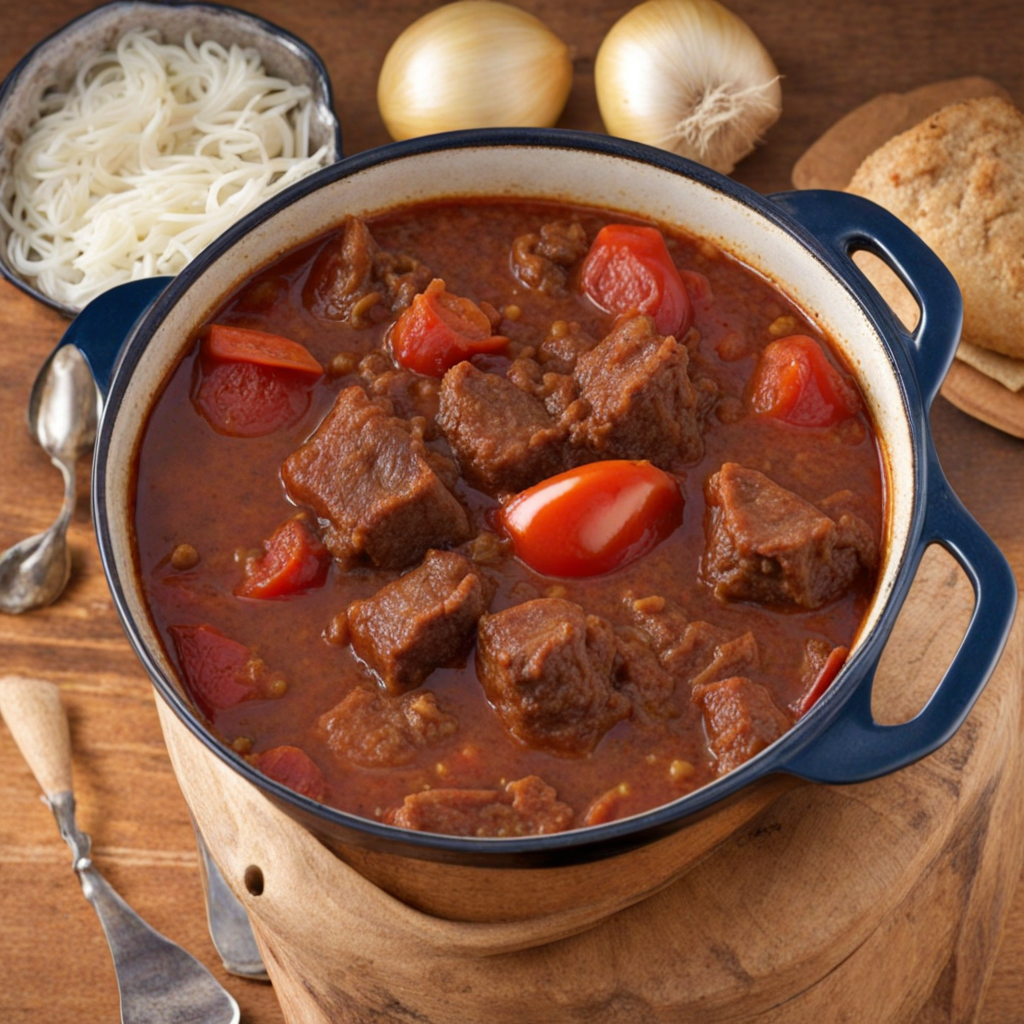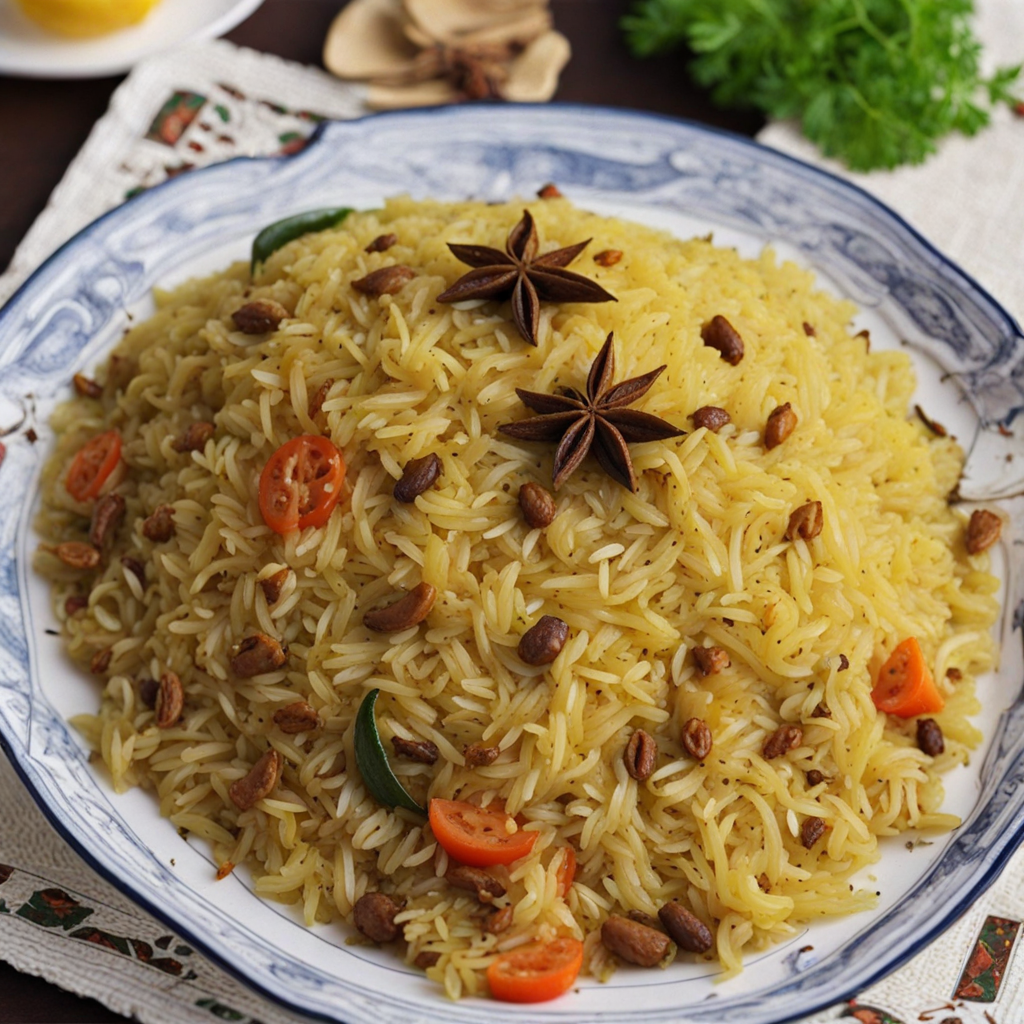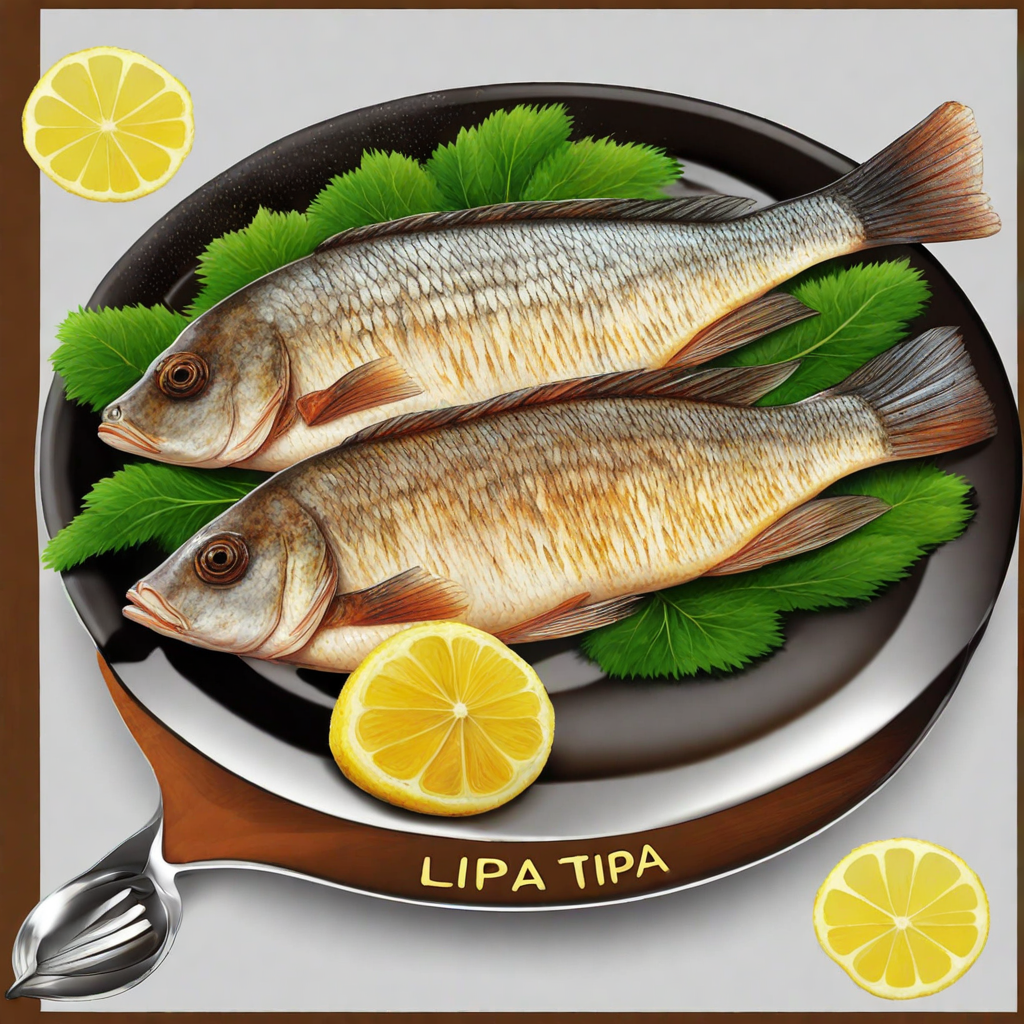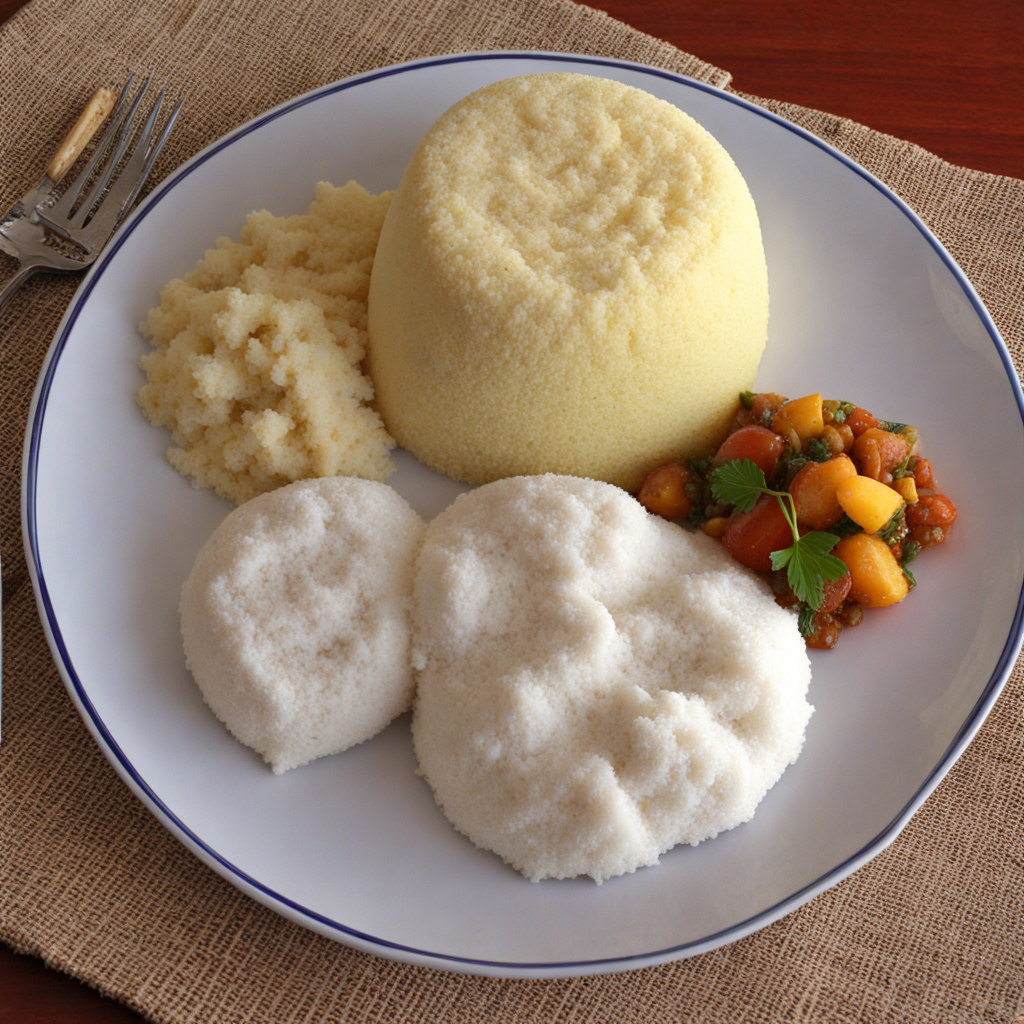Kenyan Beef Stew
Kenyan Beef Stew, known locally as 'Nyama Choma' when grilled, offers a hearty and warming experience that showcases the rich flavors of East African cuisine. The stew is typically made with tender chunks of beef that are slow-cooked to perfection, allowing the meat to absorb a medley of spices and aromatics. Common ingredients include onions, tomatoes, garlic, and ginger, which form a fragrant base, while spices like cumin, coriander, and sometimes a hint of chili add depth and warmth to the dish. The combination of these flavors results in a savory and slightly spicy stew that is both comforting and satisfying. One of the hallmark features of Kenyan Beef Stew is its use of fresh vegetables, which can vary by region and season. Carrots, potatoes, and bell peppers are often included, contributing not only to the stew's flavor profile but also to its vibrant colors. The vegetables soften and meld with the beef, creating a rich sauce that is perfect for soaking up with traditional accompaniments like ugali (a maize porridge) or chapati (a flatbread). The stew is typically cooked over a low flame, allowing the flavors to develop fully, resulting in a dish that feels both rustic and refined. Serving Kenyan Beef Stew can be a communal affair, often enjoyed in large bowls shared among family and friends. This dish is a staple at gatherings and celebrations, embodying the spirit of Kenyan hospitality. With each bite, one can experience the warmth and richness of Kenyan culture, making it not just a meal, but a way to connect with the traditions and stories of the people. Whether you're savoring it at a local eatery or preparing it at home, Kenyan Beef Stew is a delightful journey into the heart of Kenyan culinary heritage.
How It Became This Dish
Origins of Stew ya Nyama Stew ya Nyama, often translated as "meat stew," is a beloved dish that hails from Kenya, particularly among the Kikuyu and other ethnic groups. The name itself, "Nyama," means meat in Swahili, reflecting the dish's focus on protein-rich ingredients. The origins of this hearty stew can be traced back to the pastoral lifestyle of the Kikuyu people, who traditionally raised livestock such as cattle, goats, and sheep. The preparation of meat has always played a central role in their culinary practices, often reserved for special occasions, rituals, and communal gatherings. Historically, the preparation of Stew ya Nyama was not just about sustenance; it was deeply connected to the cultural identity and social fabric of the Kikuyu community. Meat was viewed as a symbol of wealth and prosperity, and its consumption was associated with celebrations, such as weddings, ceremonies, and rituals. The communal aspect of eating this stew brought people together, reinforcing social bonds and fostering a sense of belonging. \n Cultural Significance Beyond its nutritional value, Stew ya Nyama holds significant cultural importance in Kenyan society. It is often served as a centerpiece during family gatherings and festive occasions, embodying the spirit of hospitality and generosity that is integral to Kenyan culture. The dish is commonly accompanied by staple foods such as ugali (a maize porridge), rice, or chapati, creating a balanced and fulfilling meal that reflects the diverse culinary landscape of the country. In addition, Stew ya Nyama is often prepared using traditional methods, such as slow cooking in clay pots, which not only enhances the flavors but also preserves the cultural heritage associated with the dish. The act of cooking and sharing this stew transcends generations, with recipes and cooking techniques passed down through families, ensuring that the cultural significance of the dish remains alive. \n Ingredients and Preparation The preparation of Stew ya Nyama varies greatly depending on the region, the available ingredients, and personal preferences. Typically, the stew is made with chunks of beef, goat, or chicken, simmered with a medley of vegetables, spices, and herbs. Common ingredients include onions, tomatoes, garlic, ginger, and green peppers, which infuse the dish with rich flavors. The addition of spices like cumin, coriander, and black pepper enhances the stew's aroma and taste, making it a truly delightful dish. The cooking process is often a communal affair, with families and friends gathering to prepare the meal together. The meat is usually browned first to develop a rich flavor before the vegetables and spices are added. The stew is then left to simmer on low heat, allowing the flavors to meld beautifully. This slow-cooking method is fundamental, as it not only tenderizes the meat but also creates a deep, savory broth that is characteristic of Stew ya Nyama. \n Regional Variations As Kenya is home to over 40 ethnic groups, Stew ya Nyama has evolved and adapted to incorporate various regional flavors and ingredients. For example, in coastal regions, the stew may be enriched with coconut milk, adding a unique sweetness and creaminess to the dish. In contrast, communities in the arid northern regions might emphasize the use of game meat, such as antelope, which reflects the local wildlife and pastoral lifestyle. Moreover, the choice of accompaniments can vary widely. While ugali is a staple across many Kenyan communities, some may prefer to serve the stew with rice or even traditional chapati, a flatbread that complements the rich sauce. These regional adaptations showcase the versatility and resilience of Stew ya Nyama, allowing it to remain relevant to the diverse culinary practices found throughout Kenya. \n Modern Interpretations In recent years, Stew ya Nyama has gained popularity beyond traditional settings, with urbanization and globalization influencing the way this dish is prepared and consumed. Contemporary Kenyan chefs and home cooks have started to experiment with the recipe, incorporating international flavors and techniques while still honoring the dish's roots. For instance, some may introduce ingredients like wine or different types of broth, creating fusion variations that appeal to a wider audience. The dish has also found its way into restaurants and cafes, where it is often featured on menus that celebrate Kenyan cuisine. This increased visibility has helped to elevate Stew ya Nyama as a symbol of national pride, showcasing the rich culinary heritage of Kenya to both locals and tourists alike. Food festivals and cultural events often highlight this dish, promoting its significance as a representation of Kenyan hospitality and community. \n Conclusion on the Evolution of Stew ya Nyama As the culinary landscape of Kenya continues to evolve, Stew ya Nyama remains a steadfast emblem of tradition and culture. Its origins rooted in pastoral practices, the communal aspect of preparation and consumption, and its adaptability to regional variations and modern influences all contribute to its enduring appeal. Today, Stew ya Nyama is not just a meal; it is a narrative of Kenyan identity, resilience, and the power of food to unite people across generations. The legacy of Stew ya Nyama serves as a reminder of the importance of preserving culinary traditions while embracing innovation. As families gather around the pot, sharing stories and laughter over a steaming bowl of stew, they continue the age-old practice of coming together to celebrate life, culture, and community through the simple yet profound act of sharing a meal.
You may like
Discover local flavors from Kenya


